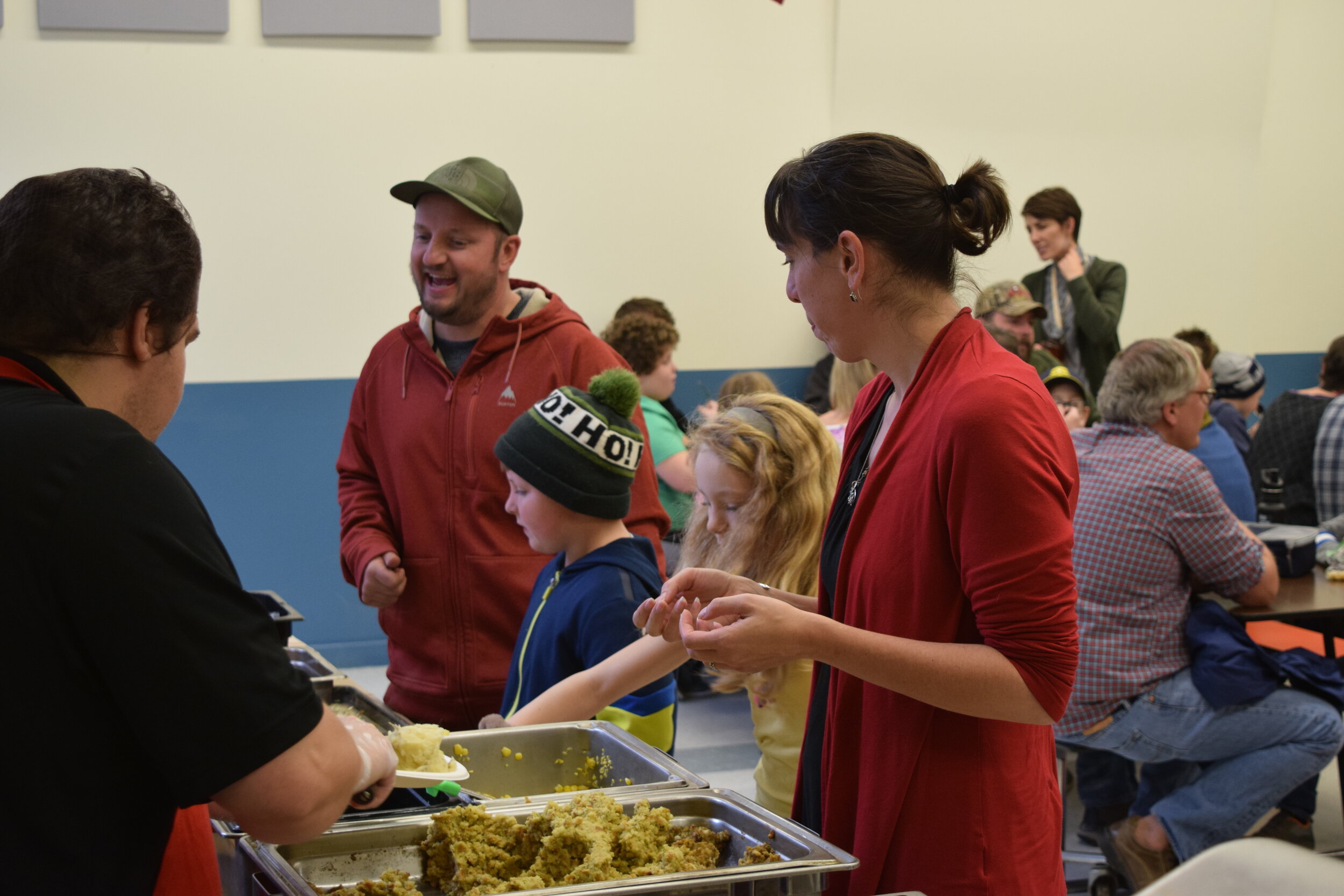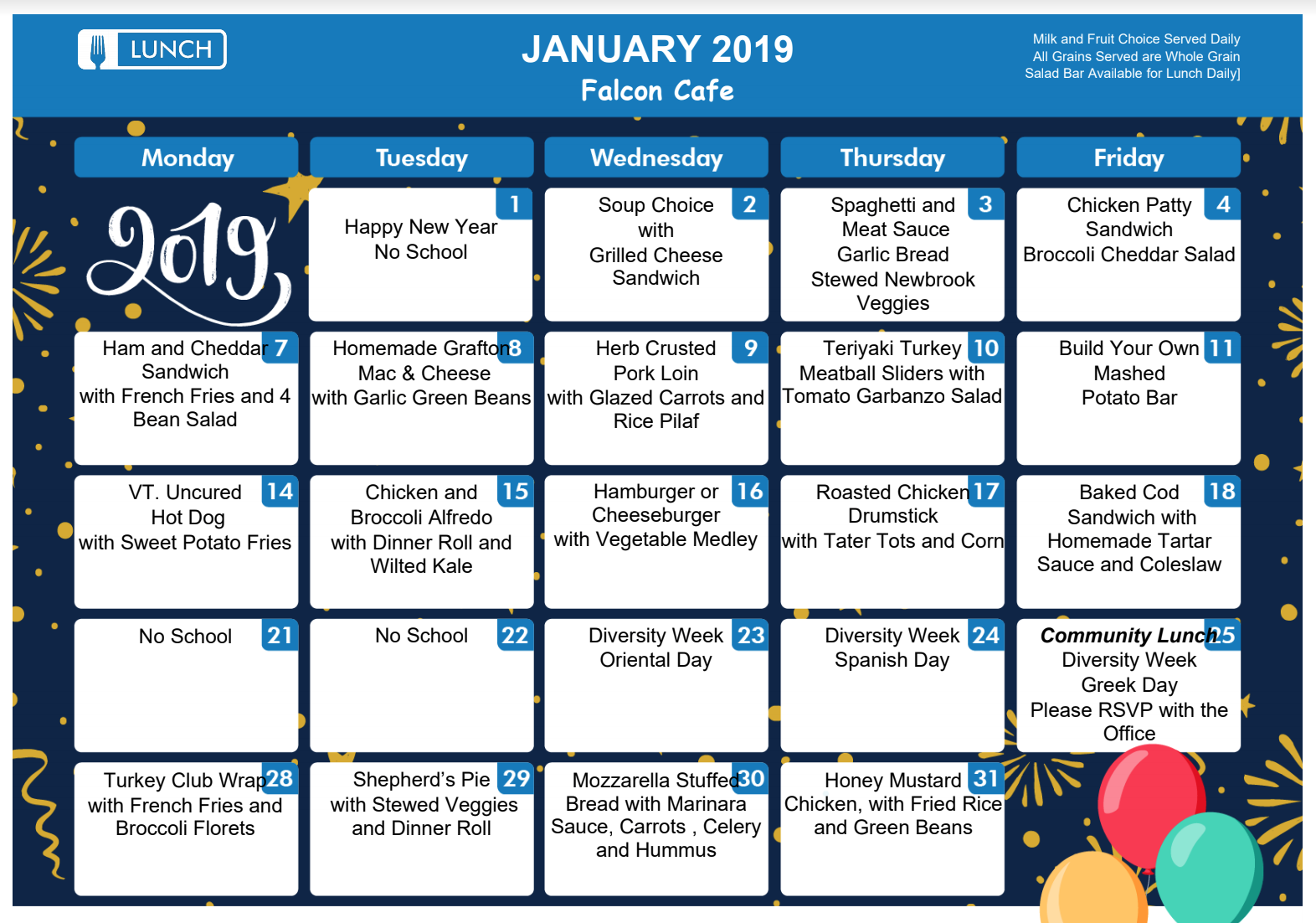Food Connects’ Farm to School program is asking many of the same questions as our colleagues in schools—What does remote learning look like for students? How can we continue to support the social and emotional needs of students? What about all the kids who rely on school meals? In the past two months, a collective epiphany swept the country as the importance of school meals came into focus. Despite looking a bit different, our work supporting and championing school meals continues—and so last Wednesday I visited Bellows Falls Union High School to lend a hand and gain a better perspective of what it takes to put out school meals in the era of COVID-19.
At the school
Bags and boxes lined up for distribution. Meals go out three times at week in the WNESU.
Bags line the facade of the building, stacked on picnic tables, as they wait to load onto buses. There’s a pop-up tent battling the wind by the road—in addition to the bus routes, families can pick up meals themselves at the high school, middle school, or Saxtons River Elementary. Once inside the cafeteria, a bustle of activity greets me as staff and volunteers pack additional bags for pickup and delivery. Like many districts, the backbone labor of Windham Northeast Supervisory Union’s (WNESU) distribution system is teachers, paraeducators, and other school support staff.
The kitchen is no less busy. Staff are preparing the last of today’s meals and getting ready for the next wave going out on Friday. Just as I start to feel a little lost with no job to do, Harley Sterling (WNESU School Nutrition Director) happily jumps alongside to show me their current set-up and talk about how the new program is going.
Four weeks in, Farm to School Cafe is finally in a groove and things are running smoothly. Harley is excited about a recent contract with the Department for Children and Families to supply breakfast, lunch, and dinner for families staying at a nearby motel. That’s an additional 160 meals a day, more community members served, and slightly more funds to run the program.
I settle in to help Melissa Bacon (Westminster School Nutrition Manager) pack bags for today's delivery to the motel and talk about how school closure affected her. Westminster School is closed, so Melissa is working out of the high school. Her son, in 3rd grade, and daughter, in 6th, are learning from home. While her daughter took to distance learning pretty quickly, her son still requires quite a bit of guidance. The Farm to School Cafe staff are balancing the responsibility of feeding their communities with the now universal job of home-school teacher.
On the bus
After finishing off the last of the bags with Melissa, I head out to one of the buses with Harley and Lija Geller (Westminster Afterschool Program Director). Renee, the bus driver, already lined the bags in the seats in order of stops. An incredibly organized system, which only took us minutes to confuse. Luckily Denise, a staff member from Westminster, joined us as well and was a regular on this route.
Since we had four volunteers on a bus that usually only had two, there was plenty of time to reorganize the lunch bags and for conversation, as we completed the route (Denise had an impressive 75’ X 75’ garden and, by the sounds of it, is a prodigious canner.) Our stops varied—meals were left on front porches, handed off to groups of cars waiting at the ends of dirt roads, and relayed to one student driving a three-wheeler.
As we drove, the conversation turned to increasing meal participation numbers. Meals are currently free to any child 18 or under—they don’t need to be a student at WNESU, there’s no income cap, and all you need to do to enroll is fill out a quick Google Form. While many families rely on the meals to feed their kids, you do not need to be in dire economic straits to receive meals nor will your participation preclude other families from participating.
All school meal programs are operating under the Summer Food Service Program rules, meaning the reimbursement rate they receive from the federal government is slightly higher. This, in turn, helps shore up school budgets in a time of increased uncertainty. Whether you sign up for meals because it’s one less thing you need to worry about or it's something familiar for your kids, all districts want you to enroll.
Bus rules to live by.
After just over an hour, we bumped along the access road into the high school parking lot with all 60 bags distributed. It was right around 11 and cars continued to roll up to the to-go tent (which was miraculously still standing). Inside, things were winding down and thoughts turned to Friday when the next round of deliveries would go out. Harley and his team are ready to keep this up for as long as it is needed—it may look a little different, but the work continues.
Questions about accessing school meals? Want to share your experience with school meals during coronavirus? Email us at farmtoschool@foodconnects.org.
















![Peabody Awards [CC BY 2.0 (https://creativecommons.org/licenses/by/2.0)]](https://images.squarespace-cdn.com/content/v1/5995f19ca803bb6608dcb3d6/1575918751814-3OGXWAYCNDJOHLCG6EZ6/Anthony_Bourdain_%2814284031394%29_%28cropped%29+-+CREDIT.jpg)











